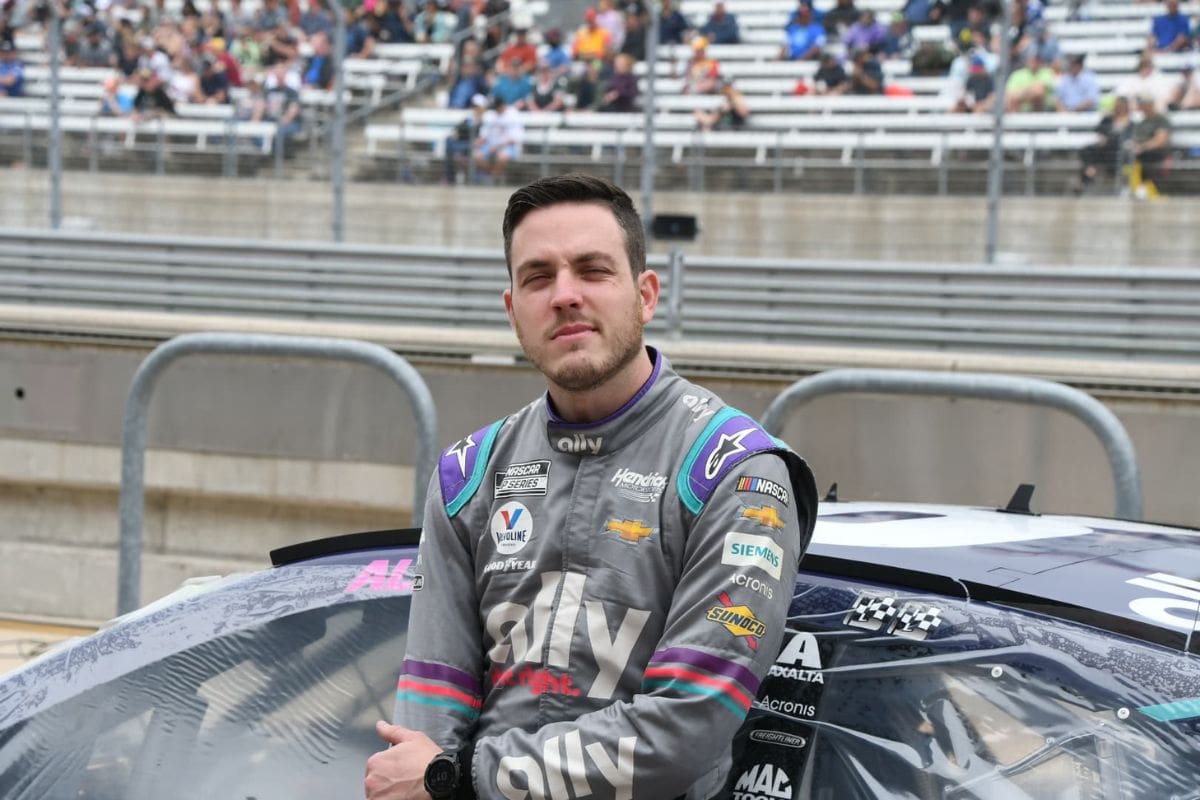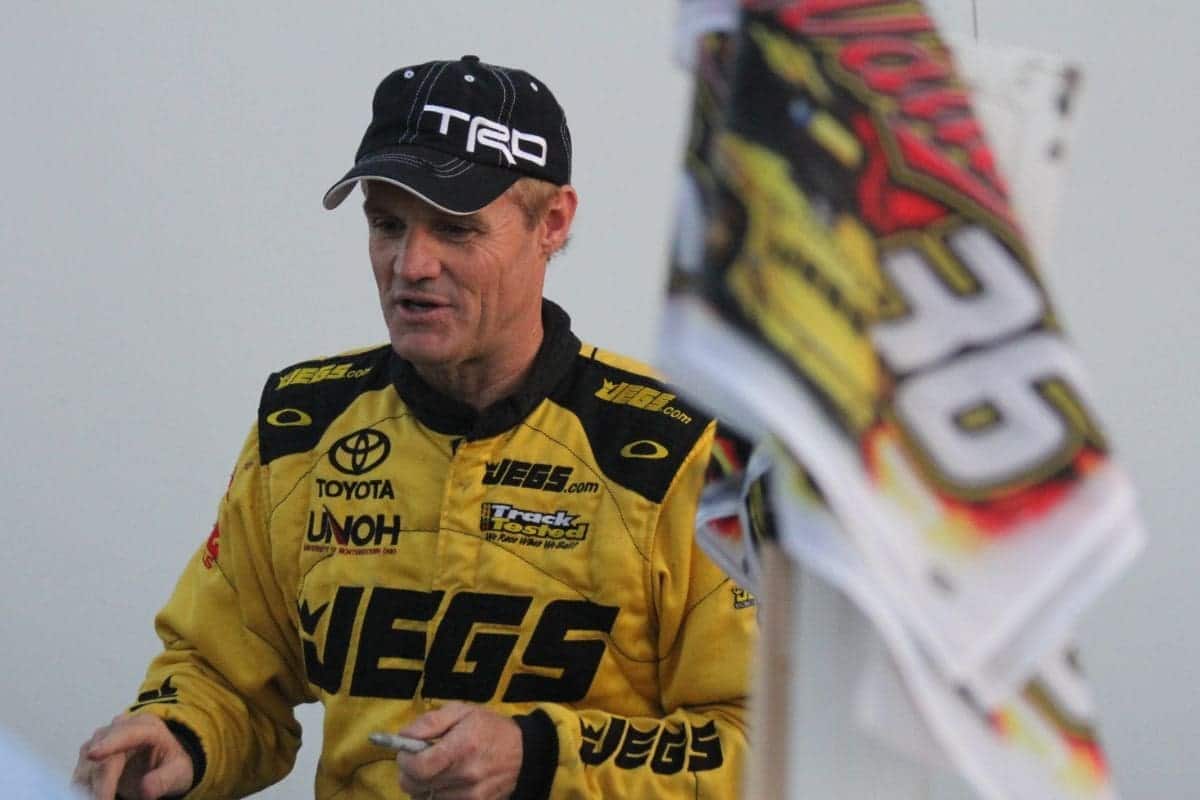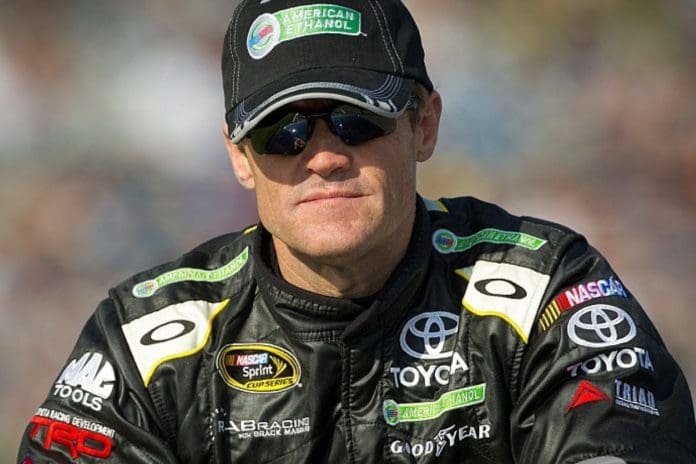Kenny Wallace Highlights Alex Bowman: In his recent analysis, Kenny Wallace brings to light a crucial moment for Alex Bowman that starkly mirrors an incident involving Dale Earnhardt Jr., casting a spotlight on the often overlooked psychological subtleties of NASCAR racing. By comparing Bowman’s public expression of frustration during the Würth 400 to Earnhardt Jr.’s well-documented struggle at Dover, Wallace not only highlights the solitary battles faced by drivers amidst the roaring engines and cheering crowds but also opens up a broader conversation about the impact of mental and emotional stresses on athletic performance.
Key Takeaways
- Kenny Wallace compared Alex Bowman’s frustration at Würth 400 to Dale Earnhardt Jr.’s isolation during the Dover incident.
- The critique focused on the interaction between Bowman and his spotter, emphasizing the need for effective communication.
- Wallace saw Bowman’s venting as a necessary emotional release, typical in the intense environment of professional racing.
- The discussion brought attention to the importance of team dynamics and psychological support in enhancing driver performance.
Alex Bowman’s Frustration at Würth 400
At Dover oval track Würth 400, Alex Bowman’s visible frustration was evident as competitive tensions on the track escalated, particularly during a critical encounter with Kyle Larson that compromised his potential for a higher finish. Bowman, piloting the #48, exhibited a strong performance throughout the race, positioning himself as a formidable contender. However, the dynamics shifted dramatically towards the end of Stage 2, where Larson, steering the #5, aggressively vied for best track positioning, directly impacting Bowman’s strategy and final standing in that segment.
“Let’s talk about that three-wide exit off Pit Road. Alex Bowman upset. At this moment. he’s running in the top three. He’s got a shot to win the race. Catches everybody in the United States off guard. Yes, the United States because social media lit up. Jimmie Johnson’s (successor) said: ‘Tell Kyle Larson, my teammate, thanks a lot buddy…’ Basically, Alex Bowman was pissed,” – wallace
Bowman’s reaction was a mix of tactical frustration and the raw emotion of seeing a possibly better finish slip through his fingers because of what he perceived as overly aggressive racing by his teammate. Amidst the heat of competition, the spotter’s aggressive encouragement over the radio was not merely about guiding Bowman; it was a strategic effort to mentally re-engage him into the race, highlighting the psychological warfare that plays out in motorsports.

Kenny Wallace’s Comparison to Dale Earnhardt Jr.’s Dover Incident
Kenny Wallace’s insightful comparison of Alex Bowman’s vocal frustrations during the Würth 400 to Dale Earnhardt Jr.’s infamous Dover incident highlights a recurring theme of isolation and challenge faced by NASCAR drivers at critical moments. Both instances reveal the intense psychological and emotional stresses these athletes endure, particularly in situations where team dynamics and competitive instincts intersect sharply.
In analyzing the Dover moment, one finds Dale Jr. confronting a profound sense of solitude and frustration, encapsulated in a stark, public display over team radio. This moment resonates deeply within the NASCAR community, not just as a solitary outburst but as a reflection of the inherent tensions that sometimes boil over in the high-stakes environment of stock car racing. Wallace’s parallel to Bowman’s incident highlights a similar vein of emotional response—this time sparked by a tactical move by a teammate, which felt to Bowman like a breach of internal team support during a critical phase of the race.
Kenny Wallace’s Perspective
Understanding the intricacies of NASCAR’s inter-team dynamics, Wallace’s empathetic stance towards Bowman’s frustration sheds light on the often-overlooked psychological battles faced by drivers during races. Wallace, a seasoned racer himself, recognizes the complexities of intra-team communication and the significant psychological stress that mounts during high-stakes competitions. His ability to empathize with Bowman’s situation stems from a deep understanding of the emotional toll that racing can exact on its participants.
Wallace critiques the interaction between Bowman and his spotter, Kevin Hamlin, highlighting the potential negative impact of spotters who engage in sharp retorts rather than providing calm, focused guidance. In Wallace’s view, Bowman was not merely complaining or showing weakness; rather, he was attempting to manage his frustration in an environment where every moment and every decision can be critical. Wallace sees Bowman’s keyed microphone as a tool for venting—a necessary release in the high-pressure environment that is NASCAR racing.
“I don’t like spotters that talk back to me… I don’t look at him (Bowman) whining and crying. I look at him keying the button, venting frustration. This is what happens.”
“He was just keying his button. He was venting his frustration. Network TV got a hold of it. They shoot to the spotter, Kevin Hamlin, and all of a sudden it’s all this drama. But I’m gonna go the other way on this one because I’m a race car driver….”-wallace

Reflections on Team Dynamics and Future Performance
Reflecting on recent events, it becomes clear that the dynamics within Bowman’s team have a profound influence on both his performance and his psychological state during competitions. The interaction between Bowman and his spotter, Kevin Hamlin, during the Würth 400, as recounted by Kenny Wallace, exemplifies this influence. Hamlin’s approach to communication not only serves as a strategic move but also as a psychological support, which is critical in high-stress environments like NASCAR racing.
“Sometimes you just want to moan to your wife or your crew members, and you just want them to hear you but Kevin Hamlin comes back and gets in Alex’s face which I didn’t like. Okay, if I’m Alex Bowman and listen, Kevin Hamlin’s a good spotter, I get it because he makes $1,000 a weekend, whatever they pay him. Spotter’s a good paying gig, but if I’m Kevin Hamlin, I’m the psychologist, I’m saying: I hear you, Alex. Stay digging buddy. We got a great car. It’s all I’d say.”-Kenny
- Psychological Support: The mental well-being of a driver can be significantly improved by supportive team members who acknowledge the driver’s emotions and concerns. This validation is crucial for maintaining focus and morale during races.
- Strategic Communication: Precise and empathetic communication from the spotter can help the driver navigate through split-second decisions on the track, improving performance and safety.
- Team Cohesion: A united team that shares a common goal and mutual respect can adapt more effectively to challenges, leveraging each member’s strengths to optimize race strategy and execution.
Reflections on Past Incidents and Future Prospects
Analyzing past incidents within NASCAR, including Dale Jr.’s poignant experience with ‘Wilson’ the volleyball, offers valuable insights into the psychological strategies teams might employ to improve driver morale and performance. The strategic introduction of Wilson into Dale Jr.’s #8 car was not just a playful gesture but a calculated psychological bolstering, designed to mitigate feelings of isolation and boost competitive spirit. This incident highlights the significant impact of psychological support and team dynamics on a driver’s performance, particularly under the high-pressure conditions of professional racing.
“It was at Dover actually… Remember when Dale Jr put a volleyball in his race car at Dover and said: okay I’m out here on the racetrack by myself. You all don’t want me talking to you. So I got this volleyball. So it was just him and the volleyball…
“And this is what Alex Bowman was doing.”-Wallace
The success of this strategy at Dover in 2001, culminating in Dale Jr.’s victory, speaks volumes about the detailed understanding of athlete psychology by NASCAR teams. It exemplifies how seemingly insignificant elements can be utilized to forge a deeper connection with drivers, improving their focus and drive during critical moments. This historical reflection sets a precedent suggesting that current teams might consider similar, personalized strategies to address specific emotional needs of their drivers.

News in Brief: Kenny Wallace Highlights Alex Bowman
The examination of Alex Bowman’s emotional turmoil at the Würth 400 through Kenny Wallace’s perspective not only highlights the acute psychological strains faced by NASCAR drivers but also illuminates the broader implications of such stress on team dynamics and individual performance.
This analysis serves as a crucial reminder of the complex interdependencies that define competitive racing, urging a reevaluation of support systems and psychological strategies within the high-pressure environment of professional motorsports.
Our Reader’s Queries
Q: What happened to Kenny Wallace?
A: Exiting NASCAR in 2015 after a remarkable stint since 1988, Wallace left a legacy with nine victories, exclusively in the NASCAR Xfinity Series. Despite retirement from the national circuit, he indulges his passion by racing on local dirt tracks nationwide.
Q: Who is Kenny Wallace’s friend Jughead?
A: Kenny Wallace sits down with his longtime crew member and friend Frankie “Jughead” Rawlins for an exclusive interview!
Also Read: Kenny Wallace’s Bold Claim: Chase Elliott, Racing’s Final Great


